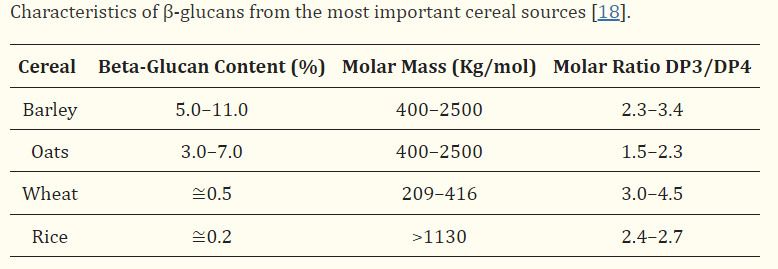This is a follow up on the prior post below. The reader’s comments are “I am feeling much better but still very fatigued and lately been quite achey. The recommendations have changed significantly except for whole grain barley.”
For more analysis see: Analysis Posts on Long COVID and ME/CFS
Comparison of Microbiome Samples
Let us first do the simple numbers. A lot of values are the same (typical) but many of them show improvement. 🙂 indicate significant reduction is out of range values See Technical Note: Lab Quality Versus Bacteria Reported We would expect a 15% drop from lower lab quality, the drops shown are well below that).
| Criteria | Current Sample | Old Sample |
|---|---|---|
| Eubiosis Index | 62.8% 🙂 | 59% |
| Lab Read Quality | 4.3 | 8.4 |
| Outside Range from JasonH | 8 | 8 |
| Outside Range from Medivere | 20 | 20 |
| Outside Range from Metagenomics | 10 | 10 |
| Outside Range from MyBioma | 8 | 8 |
| Outside Range from Nirvana/CosmosId | 18 | 18 |
| Outside Range from XenoGene | 42 | 42 |
| Outside Lab Range (+/- 1.96SD) | 9 🙂 | 16 |
| Outside Box-Plot-Whiskers | 38 🙂 | 98 |
| Outside Kaltoft-Moldrup | 56 🙂 | 139 |
| Bacteria Reported By Lab | 494 | 752 |
| Bacteria Over 90%ile | 20 🙂 | 82 |
| Bacteria Under 10%ile | 66 🙂 | 232 |
| Shannon Diversity Index | 1.465 | 1.701 |
| Simpson Diversity Index | 0.035 | 0.028 |
| Chao1 Index | 7474 | 17093 |
| Shannon Diversity Percentile | 28.5 | 61.4 |
| Simpson Diversity Percentile | 30.2 | 21.5 |
| Chao1 Percentile | 28.9 | 87.7 |
| Lab: BiomeSight | ||
| Pathogens | 18 🙂 | 39 |
| Condition Est. Over 90%ile | 4 | 4 |
| Kegg Compounds Low | 969 :-) | 1242 |
| Kegg Compounds High | 5 🙂 | 23 |
| Kegg Enzymes Low | 272 | 284 |
| Kegg Enzymes High | 17 🙂 | 75 |
| P or P Chi2 | .9999245 | .999999999 |
Health Analysis Comparisons
I have not created an automatic compare yet (on to do list). Many values were similar, some interesting ones with improvements are below. Jason Hawrelak Criteria got worse, but I have deep reservations on using his criteria on Biomesight tests (he based them on a very different test method).
Going Forward
A review of the Health Analysis was done above, with the two items: Mood Disorders and COVID-19 (a proxy for ME/CFS IMHO). A secondary review of all the items on [Changing Microbiome]/[US National Library of Medicine Studies] for high items not flagged. Nothing added.
Doing what is becoming a regular pattern: “Just give me suggestions” and then using given symptoms under Special Studies using these items:

Note: items like age and gender are omitted as well as any other symptoms that we do not have sufficient data.
First the filtered PDF suggestions. The list is much longer than usual:

And the to avoid list is more typical.

Let us go over to viewing the consensus for the latest microbiome sample to get some suggestions.

The highest suggested value/priority was 485 (so 240 for cutoff), lowest value was -574 ( so-287 for cutoff)
- Foods
- whole-grain barley
- lauric acid(fatty acid in coconut oil,in palm kernel oil,)
- Vegemite (with apologies — it’s an acquired taste)
- Diet Style
- Only gluten-free was in positive range
- Avoids: animal-based diet, high beef diet, ketogenic diet
- Herb or Spice
- Prebiotics and similar
- Nothing in take
- Avoid: inulin (prebiotic),xylan (prebiotic),Psyllium (Plantago Ovata Husk) etc
- Probiotics
- Sugar and similar- Effectively LOW SUGAR DIET
- Vitamins, Minerals and similar
- The typical ME/CFS ones: Vitamin B1, B3, B6, B7, B9, B12 and Vitamin C
- Amino Acid and similar
- melatonin supplement (it helps with sleep but also can improve the microbiome)
- Taxifolin
- Avoid most of the other ones
- Antibiotics (limited to those used for ME/CFS)
- metronidazole (antibiotic)s[CFS]
- “Metronidazole/Flagyl is reported to have 75% of CFS patients improving according to some surveys.”
- amoxicillin (antibiotic)s[CFS]
- dapsone (antibiotic)[CFS]
- lymecycline (antibiotic)[CFS]
- azithromycin,(antibiotic)s[CFS]
- metronidazole (antibiotic)s[CFS]
So in summary, shift a diet to low sugar, gluten free with moderation in meat (no guidance on chicken or fish). If your MD is willing, I would suggest reviewing Cecile Jadin approach with antibiotics and rotate with those suggested above. IMHO Continuous on a single antibiotic is more likely to complicate the microbiome.
Postscript – and Reminder
I am not a licensed medical professional and there are strict laws where I live about “appearing to practice medicine”. I am safe when it is “academic models” and I keep to the language of science, especially statistics. I am not safe when the explanations have possible overtones of advising a patient instead of presenting data to be evaluated by a medical professional before implementing.
I cannot tell people what they should take or not take. I can inform people items that have better odds of improving their microbiome as a results on numeric calculations. I am a trained experienced statistician with appropriate degrees and professional memberships. All suggestions should be reviewed by your medical professional before starting.
The answers above describe my logic and thinking and is not intended to give advice to this person or any one. Always review with your knowledgeable medical professional.






